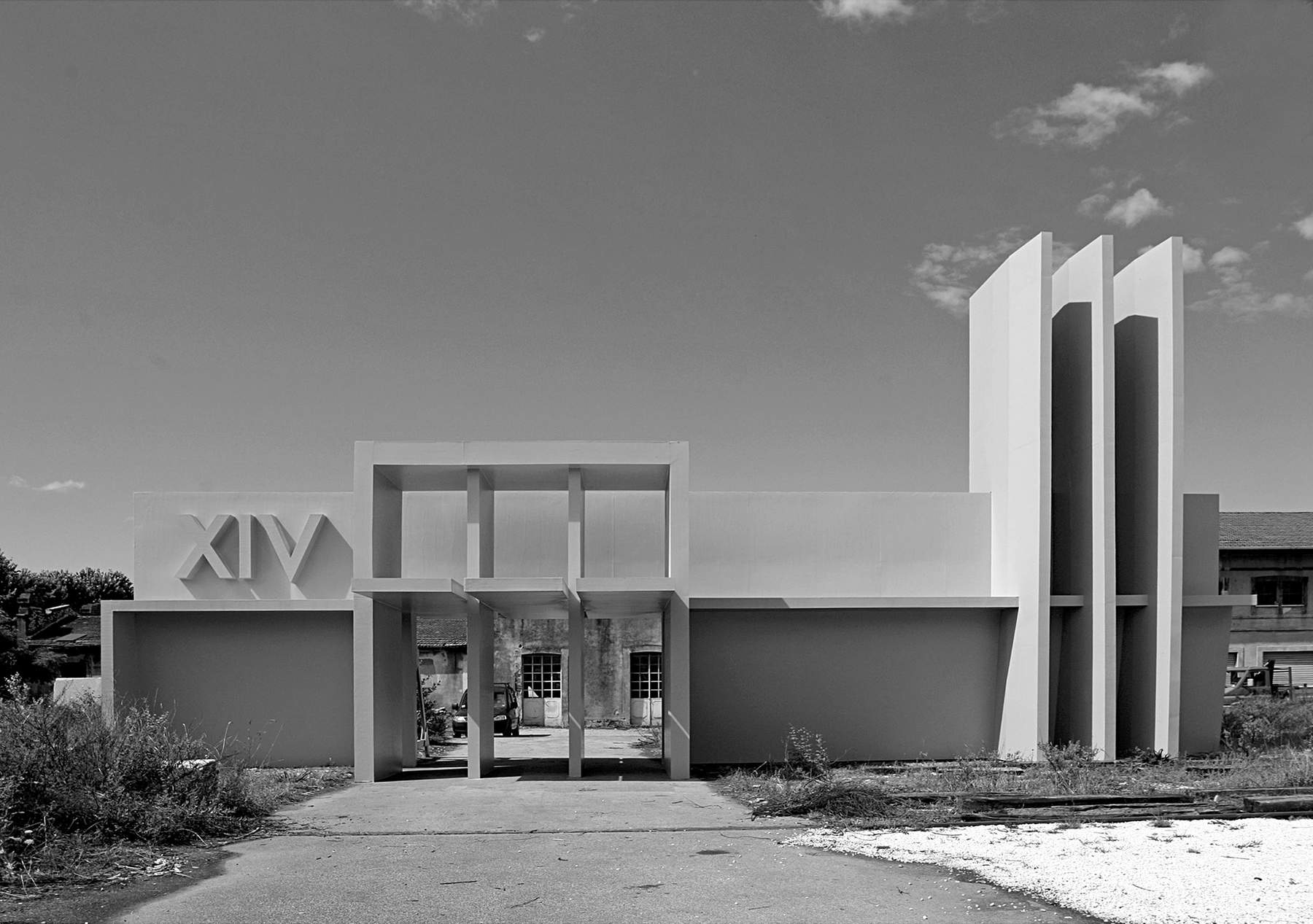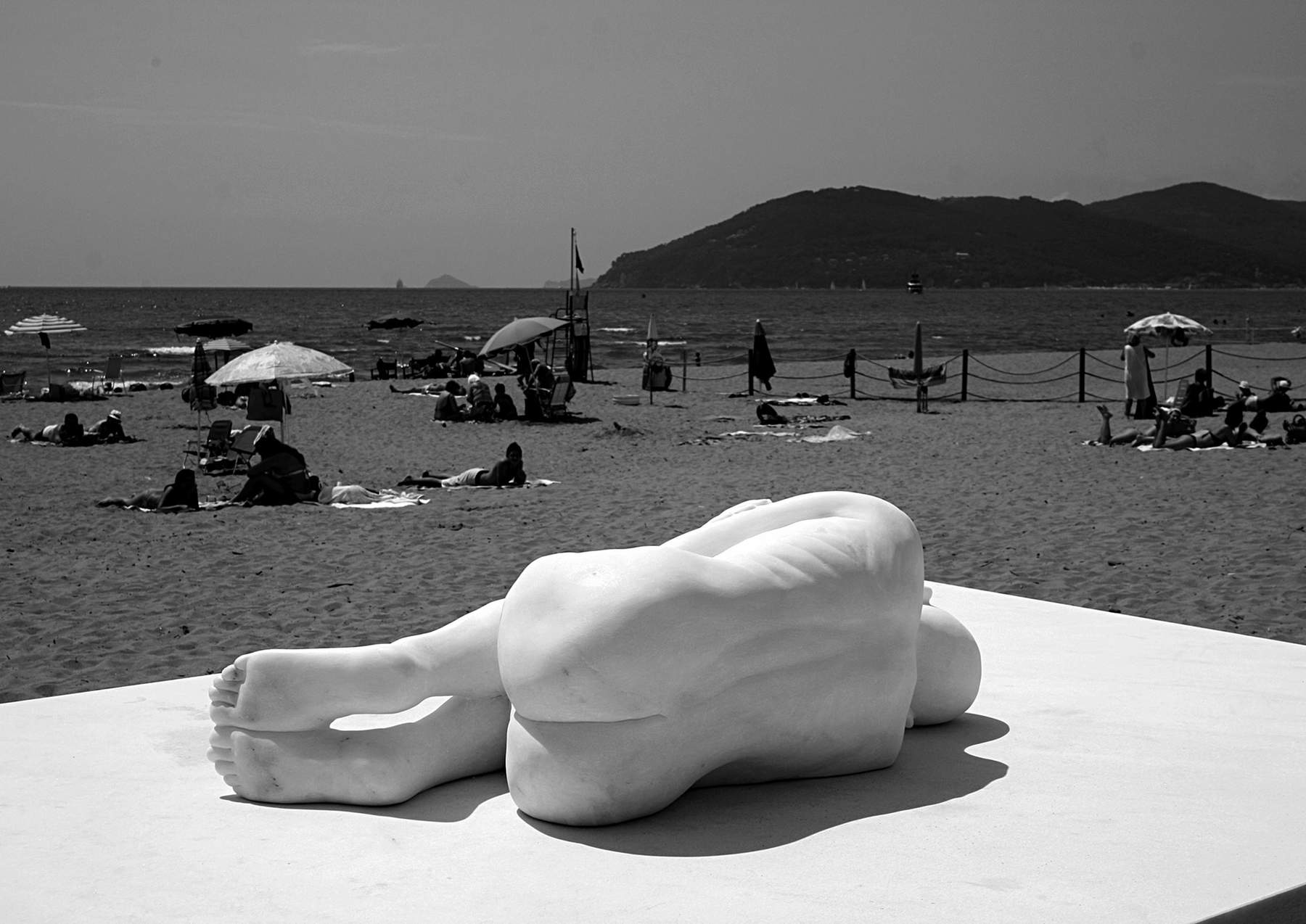Among the books I try to keep on hand at all times is a cornerstone of the bibliography on exhibition events, Francis Haskell’s The Birth of Exhibitions: In tracing the history of art exhibitions, the English art historian believed that the exhibitions mounted and curated by Mammès-Claude Pahin de La Blancherie, between 1782 and 1783, were the first animated by the “genuinely interested desire to honor the (carefully selected) authors of the works exhibited,” and were able to establish a caesura with the exhibitions organized in the past, which were driven primarily by three motives, according to Haskell: “celebration, ostentation and commerce.”
Celebration, ostentation and commerce still appear to us today as a kind of unwritten code, valid for most of the exhibitions of ancient and contemporary art that open every day in Italy and around the world. An unwritten code but one that continually manifests itself in all its palpable materiality made up of pompous events aimed at celebrating artists’ birthdays (we all had proof of this last year with the Leonardo anniversary, and this year the health emergency will have saved us from so many insulting exhibitions on Raphael that will surely have remained on paper), of imposing transmigrations of works of art that move from one end of the planet to the other, often for reasons that go beyond those of art history as a subject based on its own scientificity, or again, if we think of contemporary art, of empty happenings populated largely by a swarming and noisy fauna that chases relationships and proseccoes rather than the real meaning of the works on display (assuming that for much of the art on view there is any).
Is this still a sustainable model for the post-Covid era? Perhaps our frame of mind will be changed by the ongoing pandemic (and we will be discussing this topic as well with experts in the field on these pages shortly), but it is also safe to assume the opposite, which is that, once the (now certain) hellish rigmarole of physical distancing and mandated facial coverage is over, everything will continue according to the business-as-usual formula. The indefatigable directors of the art circus, however, will have to reckon with the economic crisis and the period of tightness that we will face even when the disease is eradicated and an obnoxious memory of a year to forget remains: at that point, a new paradigm for exhibitions and events will no longer be a choice, but will be an obligation sanctioned by the scarcity of means and, foreshadowing a bleak scenario, by the more or less extensive disappearance of those who will be forced to close down. It will certainly be a short-lived period, since (economic history teaches us) economic crises due not to structural reasons but to external agents intervening with strong but momentary upheavals are always followed by equally dazzling periods of recovery. But it will still be a period that will force us (and in some ways is already forcing us) to think.
Gallerist Nicola Ricci, who, moreover, is celebrating his 20th year in business this year, told me a few days ago about his new project, which will open at the Vôtre space in Carrara when we can finally go back to visiting museums and galleries: it is called The Last, and it is a photographic exhibition that will collect eighty black-and-white shots of the fourteenth International Sculpture Biennial of Carrara (“the last” because it is, precisely, the last one held before the event was suspended indefinitely: it was 2010), taken by the Milanese photographer Valerio Brambilla. The opening is set for June, probably before the 15th, and will be open until the end of July (I enclose below a preview of some of the photographs that will be on display). Nicola, on the phone, explained to me that the goals of this exhibition are essentially two, but they are inescapably intertwined. The first is to initiate a reflection on how we were (and, in turn, on how we could have continued to be), and the second, conversely, to open a discussion on how we will be, and in particular to bring to the attention of the community, art lovers and institutions the importance of thinking about a shrewd and wide-ranging cultural policy, one that avoids wasteful fragmentation of resources and energies, one that eschews the counterproductive logic of focusing everything on the big name (by way of example: in Carrara, in the last eight years alone, there have been five exhibitions on Canova, between serious exhibitions and useless shenanigans), that aims to give adequate value to quality.
 |
| Vanessa Beecroft at the 14th Carrara International Sculpture Biennale (2010). Ph. Valerio Brambilla |
 |
| Kevin van Braak at the 14th International Sculpture Biennale of Carrara (2010). Ph. Valerio Brambilla |
 |
| Antony Gormley at the 14th International Sculpture Biennale of Carrara (2010). Ph. Valerio Brambilla |
 |
| Terence Koh at the 14th International Sculpture Biennale of Carrara (2010). Ph. Valerio Brambilla |
 |
| Giorgio Andreotta Calò at the 14th International Sculpture Biennale of Carrara (2010). Ph. Valerio Brambilla |
These are good principles that have been systematically disregarded in recent years, but with which we will have to learn to be familiar in the months (and perhaps years) to come, if we do not want to be faced with a cultural desertification that, in the first place, will entail large and painful massacres of spaces and museums that will not have the strength to survive, and in the second instance will impart a conspicuous acceleration to the process of cultural flattening already underway. Historically, major crises have always caused impressive changes to art as well, which after an event of great impact has always been led to enact processes of critical reexamination of what had been conquered so far. No sudden renaissance is to be expected from the plague, as those who tend to reduce history to a caricatured feuilleton are repeating these days: on the contrary, periods of uncertainty have almost always revived relations with tradition, especially the highest and most established tradition. Talking with Nicola about Biennale di Scultura (of which he himself has been an important animator with his gallery, especially in the last three editions, bringing artists such as Mat Collishaw, Luigi Mainolfi, Italo Zuffi, Flavio Favelli and others to the city), I picked up the catalog of the previous edition, the 2008 one, curated by Francesco Poli, which aimed to “reaffirm the sense of a historical tradition that closely links the city to sculptural production and which culturally is also a notable strong point today.”
Poli wrote that such an exhibition, while rooted in tradition, “in order to play an effective role on the art scene,” had to “focus attention on the most significant and innovative aspects of research,” without “chasing novelty at all costs, too often conditioned by the superficial effervescence of fashions,” but trying “to achieve [...] a more thoughtful exhibition project, which contributes to a sufficiently in-depth reflection and therefore also to a more precise vision of the current state of the actual leading values.” Here: something like this will be needed for the future. A model of cultural progress (and not of mere development) that considers the bulimia of events, often haphazard and organized to the best of its ability, as a mistake; that concentrates investment on the directions of quality and growth of the territory and its inhabitants; that can avoid chasing fashions and succeeds in basing its proposals on the values of scientific soundness, usefulness, breadth of vision, and collaboration. These are all resources that will be indispensable in building the post-virus culture. Theonline will certainly be important: it will not be an answer, but it will be a tool that must necessarily accompany serious, timely cultural planning, equipped with strategic vision, entrusted to expertise and not improvisation.
It is, in essence, a cultural model that aims at valorization in the truest and noblest sense of the term: therefore, not a “valorization” such as the one that is often talked about in the sector and in the name of which the most abhorrent and pernicious displacements of works of art have been justified, often going so far as to think that “valorizing” a work means uprooting it from its context to bring it into a container where thousands of people are induced to see it because the need to see that very exhibition is artificially created. Or at most thinking that “enhancement” means organizing a few yoga or zumba classes to make most people remember that there is a place called a “museum.” It is, if anything, a valorization of local energies and cultural resources (Ilaria Bonacossa was talking about it a few days ago, on these pages, reasoning about art fairs) without forgetting that one will always act in a global context: and in this sense it is useful to emphasize how many of the problems and challenges of individual communities are largely shared (just think of the problem of environmental sustainability), how international collaboration is an extraordinary resource to try to overcome them, and how an inclusive and open culture can continuously provide answers and arguments. And a cultural model that, in addition to this, is based on continuous process improvement, long-term planning (and thus the ability to plan), protection of works and labor, research, consolidation of acquired results, and revaluation of territorial potential. A “cultural system that proves to be in line with the spirit of the times, and with the new needs to redesign our relationship with space and time in a softer way,” as Michele Trimarchi hopes. The crisis, in essence, has only reaffirmed the need to take a road already indicated by many: it will remain to be seen if we have the will and the courage to take it. Otherwise, nothing but black and white photographs will remain of the past.
Warning: the translation into English of the original Italian article was created using automatic tools. We undertake to review all articles, but we do not guarantee the total absence of inaccuracies in the translation due to the program. You can find the original by clicking on the ITA button. If you find any mistake,please contact us.